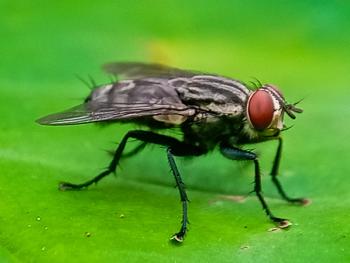
Cryptosporidium – Do I have to learn all those new species? (Proceedings)
Cryptosporidium spp. are protozoan parasites of a wide variety of vertebrates, including humans, dogs, cats, horses and livestock. They are found throughout the world and are considered to be primary pathogens of both public health and veterinary concern because of their ability to cause gastrointestinal disease, their ubiquitous presence in the environment, and associations with large scale waterborne and foodborne outbreaks.
Cryptosporidium spp. are protozoan parasites of a wide variety of vertebrates, including humans, dogs, cats, horses and livestock. They are found throughout the world and are considered to be primary pathogens of both public health and veterinary concern because of their ability to cause gastrointestinal disease, their ubiquitous presence in the environment, and associations with large scale waterborne and foodborne outbreaks. Currently, there are at least 20 valid species and many more genetic types. As we will see, the role of domestic animals in human cryptosporidiosis is limited.
The first species of Cryptosporidium (C. muris) was described from mice in 1907. It wasn't until much, much later that cryptosporidiosis was identified in cats (1979) and dogs (1981). Research into the detection and characterization of Cryptosporidium in companion animals has been driven by public health concerns that domestic animals harbor species with zoonotic potential. In mammals, Cryptosporidium spp. are obligate, intracellular parasites of the gastrointestinal tract. Cryptosporidiosis in dogs and cats is similar. At about 5 um, the round oocysts are quite small. They are fully infectious when passed in the feces. Infection of the next host occurs through ingestion of contaminated water, food or other contaminated environments. The oocysts excyst and the sporozoites penetrate epithelial cells of the small intestine. In most cases, epithelial damage is minimal. However, in severe cases, infections result in an inability to maintain water balance. Thus, diarrhea is usually the most commonly reported clinical sign associated with infection. However, many animals are infected wtihout showing signs at all. Detection of these small oocysts can be problematic. Oocysts can be found on fecal flotation, but, the microscopist must be aware of what he/she is looking for as they are easily overlooked. Oocysts are acid-fast positive, so staining of fecal smears can be helpful. However, because smears use such a small amount of material, numerous organisms must be present in order to be detectable. Other methods of detecting the oocysts include immunofluorescent antibody (IFA) tests and antigen detection tests. These latter tests are used for and approved in the diagnosis of human cryptosporidiosis; their utility in detecting oocysts in dogs and cats has only been verified for IFA. Oocysts are moderately resistant to environmental extremes and the routine levels of chlorine found in water. There is no approved treatment for either species of Cryptosporidium in dogs or cat.
The most common symptoms of cryptosporidiosis in people includes diarrhea, vomiting, abdominal pain and general malaise. Infections of other organs, (e.g., pancreas, bile ducts, respiratory tract) can occur in people with immunodeficiencies such as acquired immunodeficiency syndrome (AIDS). In immunocompetent people, the clinical signs will last anywhere from a few days to a few weeks. Thereafter, the individual will develop partial resistance to further clinical disease. However, in immunocompromised people, a chronic form of the disease can occur leading to electrolyte imbalances and dehydration. In such cases, infection can lead to death.
For years, the species of Cryptosporidium thought to occur in most mammalian hosts was C. parvum, which was considered to be highly zoonotic. However, current evidence indicates that this dogma was incorrect. Molecular genetics has helped us to understand that there are many species of Cryptosporidium out there, most of which do not cross between humans and other animals. Thus, dogs tend to be infected with C. canis and cats with C. felis although C. muris and C. parvum occasionally are detected in dogs and cats. Molecular genetics has confirmed that the host range for C. parvum is much broader than that for either C. canis or C. felis, and is routinely detected in young calves. Likewise, Cryptosporidium ubiquitum (formerly Cryptosporidium cervine-genotype) has been identified in a wide variety of animals, including sheep, cattle, cervids, and humans. In contrast, C. hominis tends to be confined to humans. Most human cases of cryptosporidiosis are associated with either C. hominis or C. parvum, although a recent outbreak was associated with a rabbit genotype. Although C. felis and C. canis have been identified in humans, their prevalence is extremely low ranging from 2.6% (C. felis) and 0.4% (C. canis) in adults to 3.3% (C. felis) and 4.0% (C. canis) in children. Although this suggests that zoonotic transmission is possible for these two species, it has been suggested that some of these infections are transmitted between people with no dog or cat involvement. In contrast, C. parvum is clearly zoonotic although transmission between people cannot be discounted. Thus, molecular evidence to date suggests that the risk of zoonotic transmission of Cryptosporidium spp. from companion animals is low. However, clients should be advised to minimize contact with pet feces, particularly if they are immunocompromised.
Newsletter
From exam room tips to practice management insights, get trusted veterinary news delivered straight to your inbox—subscribe to dvm360.




